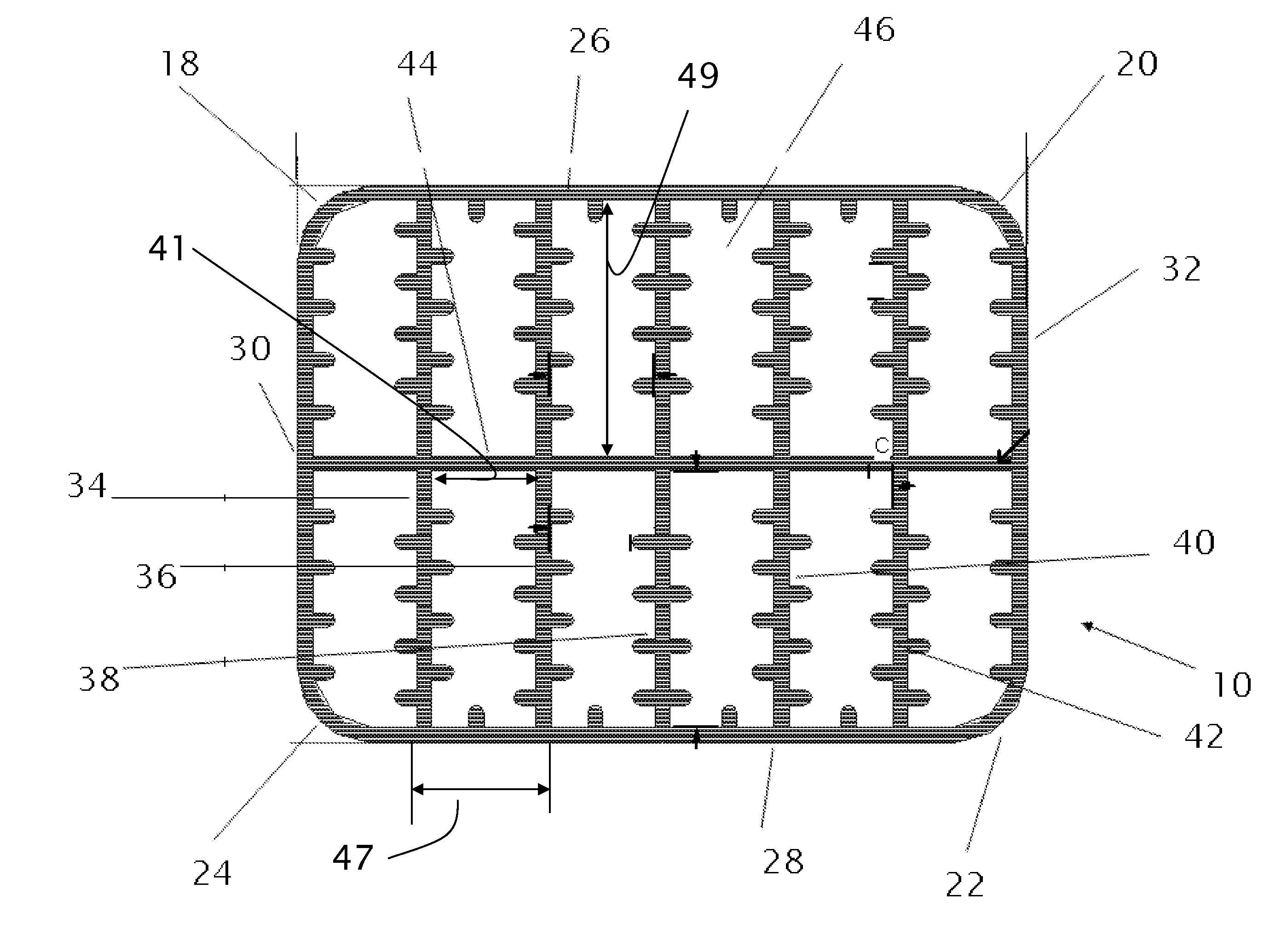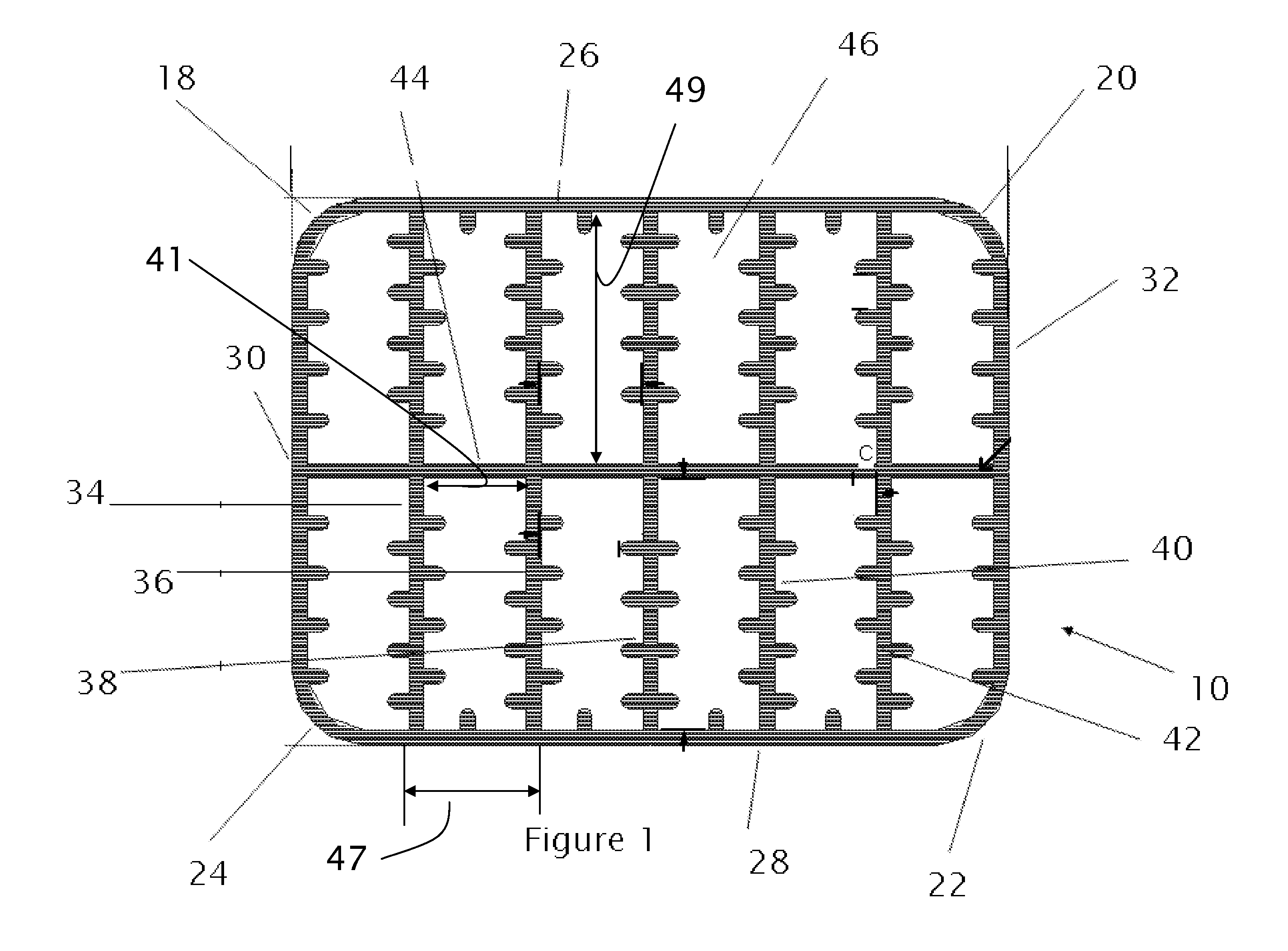Biomass carrier promoting simultaneous nitrification-de-nitrification
a biomass carrier and nitrification technology, applied in the direction of water/sludge/sewage treatment, filtration separation, moving filter element filters, etc., can solve the problem of reducing and reducing the volume of waste water flow. , to achieve the effect of reducing the rate of sndn, reducing the yield of sludge, and optimizing the productivity of in-service protected surface area
- Summary
- Abstract
- Description
- Claims
- Application Information
AI Technical Summary
Benefits of technology
Problems solved by technology
Method used
Image
Examples
Embodiment Construction
[0027]Referring now to FIG. 1, there is shown the proposed design for my invention (10) depicted in cross section. As illustrated, the biomass carrier (10) of my invention consists of a specific geometric design of the carrier framework.
[0028]Referring now to FIG. 3, there is illustrated the specific morphology for the surfaces (12), (14), and (16) of the biomass carrier illustrated in FIG. 1.
[0029]FIG. 1 depicts the preferred embodiment of the biomass carrier (10) using surface morphology pattern (12). However, the biomass carrier could accommodate any of the alternative patterns (14) or (16) depicted in FIG. 2.
[0030]The profile of the preferred embodiment of the biomass carrier (10) has a substantially hollow rectangular body with rounded corners (18), (20), (22) and (24). For the sake of reference, the biomass carrier comprises four walls: top (26), bottom (28), left (30) and right (32). The body is hollow to permit mass transfer there through. Inside these four walls are equally...
PUM
| Property | Measurement | Unit |
|---|---|---|
| aspect ratio | aaaaa | aaaaa |
| aspect ratio | aaaaa | aaaaa |
| aspect ratio | aaaaa | aaaaa |
Abstract
Description
Claims
Application Information
 Login to View More
Login to View More - R&D
- Intellectual Property
- Life Sciences
- Materials
- Tech Scout
- Unparalleled Data Quality
- Higher Quality Content
- 60% Fewer Hallucinations
Browse by: Latest US Patents, China's latest patents, Technical Efficacy Thesaurus, Application Domain, Technology Topic, Popular Technical Reports.
© 2025 PatSnap. All rights reserved.Legal|Privacy policy|Modern Slavery Act Transparency Statement|Sitemap|About US| Contact US: help@patsnap.com



